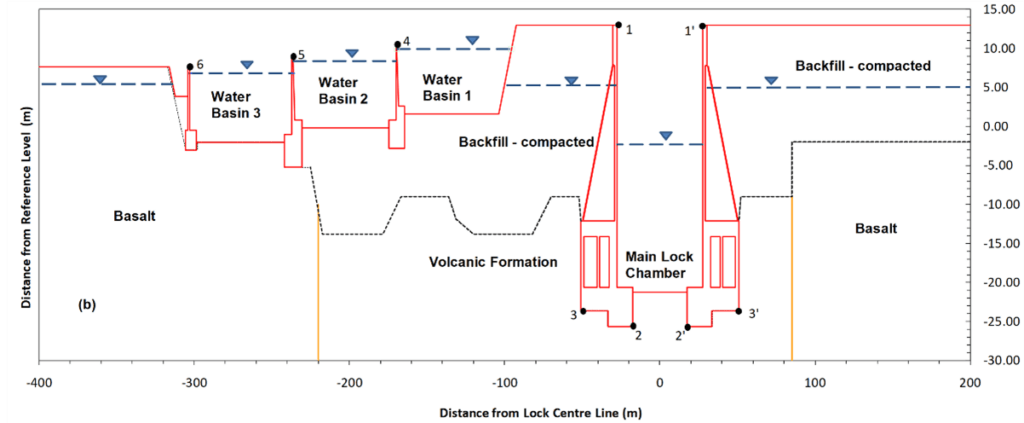
Seismic Response of Complex Soil Structure Systems
Location: Panama
Client: Royal Haskoning
Dates: 2008, 2016
Upgrade of the Panama Canal to allow the passage of larger, post-Panamax shipping was proposed. The work involved: deepening the canal approaches, constructing a 3rd set of locks at both the Atlantic and Pacific coasts, deepening the canal section between these locks by both raising the Gatun Lake level and dredging the canal route. Royal Haskoning UK Ltd (RH) was part of a joint venture consortium tendering for design and construction works including the design of the 3rd set of locks and associated Water Saving Basins.
GCG was commissioned by RH to carry out a peer review of the seismic design methodology utilised by RH, including undertaking an independent check using dynamic 2-D dimensional finite element analyses of the most critical section. GCG also provided advice to RH on the tender design.
Work done by GCG in support of the tender design included finite element analyses using ICFEP. Analyses were performed using a linear elastic model with equivalent linear material properties for stiffness and damping, and also using a nonlinear cyclic model, which adopted a logarithmic function to describe the backbone curve, coupled with a Mohr-Coulomb failure criterion. One of the areas of concern examined was the rocking motion of the locks, which could lead to lift-off of the wall base or cumulative ratcheting deformations on the active side, due to fall in of cohesionless material.
Later, GCG also provided expert support to the Owner via a firm of solicitors for the Dispute Arbitration Board process. This considered claims by the wining Contractor after construction. The claims as related to seismic design and associated the construction of the Third Set of Locks.